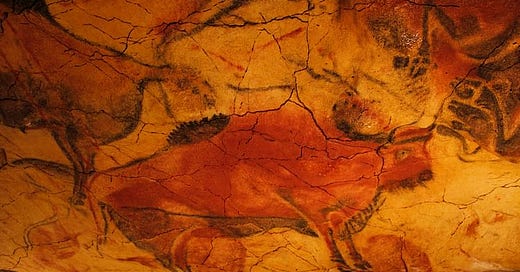María was like most eight year olds: intensely curious.
As she led her father, Marcelino Sanz de Sautuola, through the Caves of Altamira, her heart must have pounded with excitement. Their lanterns revealed a spectacle that would change the course of history.
There, on the walls, danced images of bison, horses, and abstract symbols, painted with a mastery that seemed impossible for its age. This discovery was more than a collection of ancient art; it was a window into the souls of early humans, waiting to be unlocked by a father and daughter on an ordinary day of exploration.
Many of our most profound discoveries have come about almost by accident, by leaving the doorway to the absurd ajar. The Rosetta Stone is one such discovery, reshaping the way we view history and revealing a new paradigm in understanding.
The artwork at the Caves of Altamira is another.
Unearthing a Timeless Masterpiece
I don’t know if eight-year-old Maria got a sense of deep, intelligent meaning behind the ochre and…
Keep reading with a 7-day free trial
Subscribe to Goatfury Writes to keep reading this post and get 7 days of free access to the full post archives.



